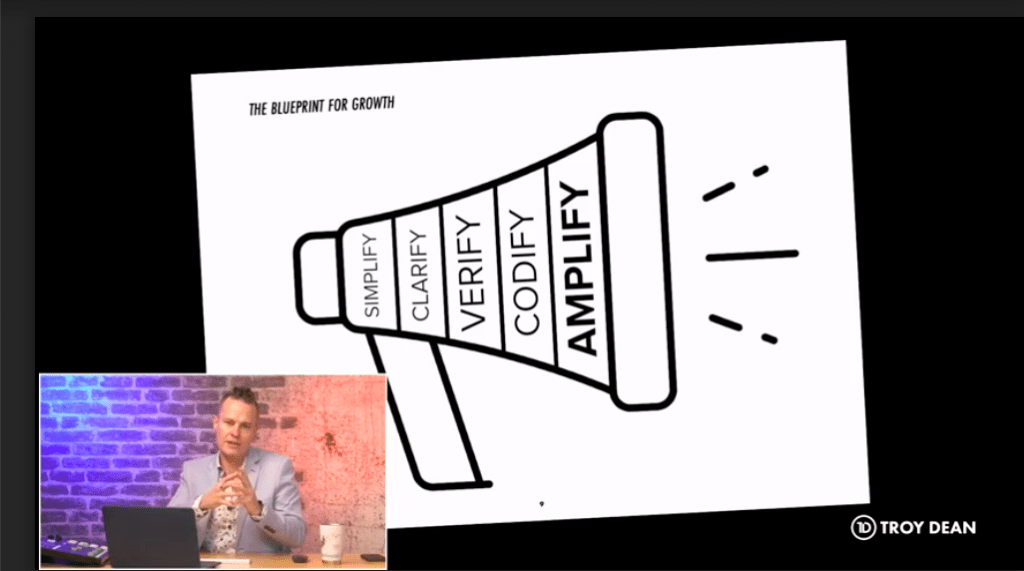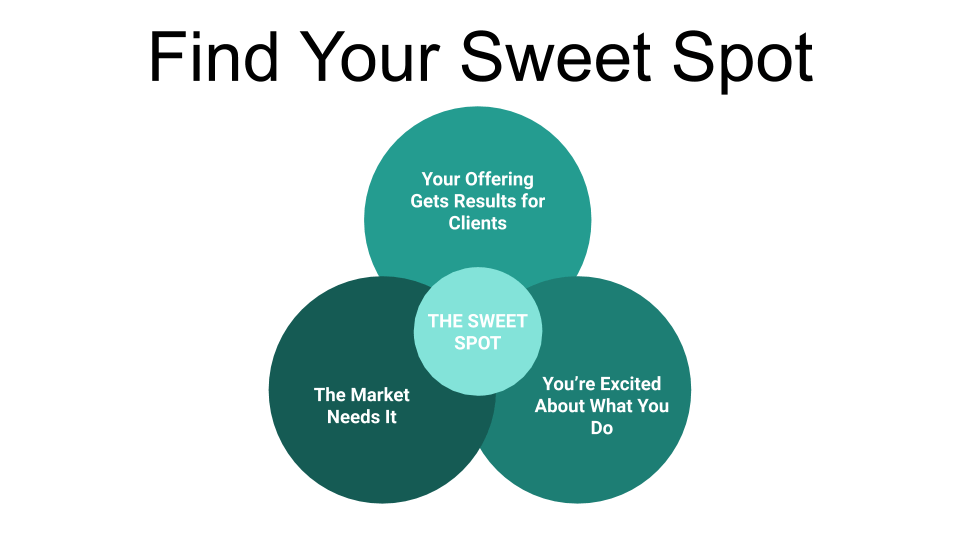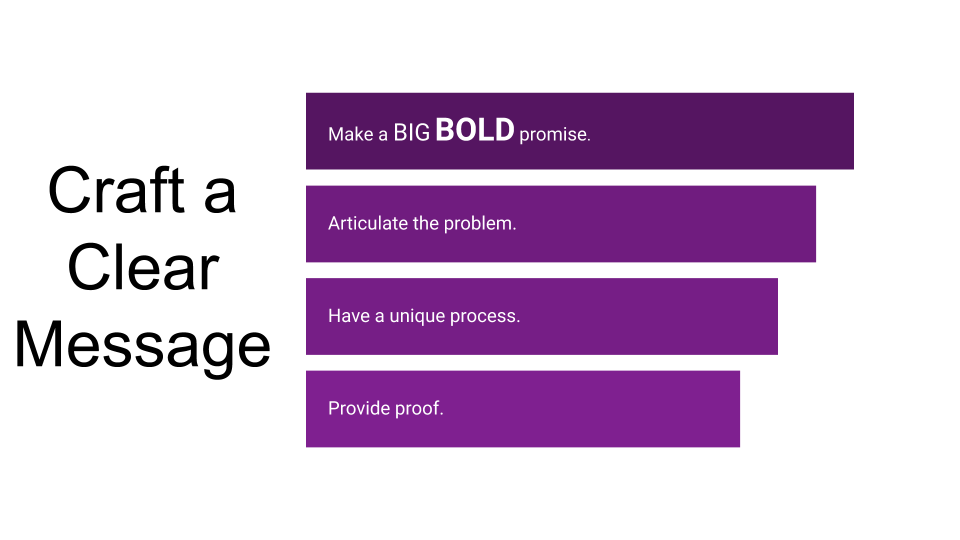Is there a little voice in your head that says:
“You can't have it all”
OK, so I know that running your own business can be hard work, especially when you're starting out.
But we have so many Agency Mavericks members that are proof that you absolutely can have it all.
Take, for example, one of our Mavericks – Josiah. He left his secure job and now runs a successful agency with the freedom to spend quality time with his family:
So here’s the thing…
You don’t have to wait for some imaginary date for your dream to become a reality.
You can make it happen as soon as you’re ready to do the work. And guess what? This tutorial with Troy will teach you how to build a business that supports the lifestyle that you dream of.
When you have 45 minutes to spare, check out the video below where Troy discusses the 5-step Blueprint while introducing you to some people who’re now living their dream lives thanks to it.
What Do You Want to Do with Your Life? (2:45)
Before we move on, it’s important to understand what it is you’re working for. In other words, once you’ve built a business that gives you the freedom in life you’ve always desired, what exactly does that look like?
Keep this in mind as you work through the Blueprint for Growth. Because, as you’ll soon see, there’s a lot of hard work ahead of you. And this isn’t just work you’ll do on your business. This is work you’ll do on yourself, too.
The Blueprint for Growth (5:15)
There’s no such thing as skipping steps or quitting before the end. If you want more money, time and freedom to do the things you want to do, you have to commit to the full Blueprint.

Ready to get started?
Good.
Here we go:
Step 1: Simplify (9:15)
According to the Pareto principle, 20% of the work you do moves 80% of your needle.
Take a close look at your business and, in particular, where your earnings have come from in the past. You’ll see a similar distribution of effort vs. wealth.
That’s why it’s so critical to simplify your business model and niche down — so you stop wasting energy on offerings that don’t pay off.
There’s an added benefit to this as well. When you simplify your offering, it becomes much easier to sell yourself as you’re not trying to be all things to all people. Instead, you cut through the noise with your unique and standout offering.
This, in turn, makes it easy for others to refer business your way.
How Do You Simplify?
The answer is simple enough:
Find your sweet spot.
You’ll find it here:

Step 2: Clarify (14:40)
First things first:
Nobody cares about what you do. All they care about are the results.
So, once you have simplified down your offering, you need to explain it in a way that makes sense for your target market. And after you put your clarified message out there, your prospective clients should be clamouring to tell you:
“Yes! Let’s exactly what I need!”
In order for this to happen, your promise needs to exceed consumer expectations. That means staying away from generalities about what you do. Be as specific and clear as possible.
How Do You Clarify?
Your statement should include the following:

In the end, you should have nothing more than a natural-sounding sentence that sums up how your promise will change their lives.
Step 3: Verify (20:00)
You know that you have an offering your target market needs. But do they feel the same way?
If you can’t get people to buy your products, then forget about the rest of the Blueprint for Growth.
What you need to do now is to verify that your offering is exactly what your clients need. And if it’s not, then you need to work on improving it so that it is.
If they haven’t been part of the process to create your products or services, now is the time to get their feedback. The more input you get from your target audience, the better you can tailor it to their exact needs.
How Do You Verify?
Ask questions!
Find out why current and former clients bought from you. Ask them how they felt before and after the process. Were there any problems? Anything they wished had happened differently?
Get inquisitive with prospects, too. Ask them:
“Where do you want to be in 12 months? What does success look like at the end of this? What roadblocks are you concerned about?”
And don’t forget to dig deep into any rejections you receive:
“Why isn’t this right for you? What does it need to look like for you to say “yes” and throw me your credit card?”
If your offering doesn’t perfectly suit your target market, redesign it so that it does.
Step 4: Codify (22:45)
Every time a new client comes through your door, you’re effectively collecting data on the efficacy of your business processes. Make sure you’re doing something with it.
Codification is nothing more than the act of creating, documenting and refining your processes.
Without stringent processes or documentation, there’s no way to ensure consistency from project to project or client to client. It’s also an incredibly inefficient and costly way to run a company.
When you do finally nail this piece, your business will become an asset that’s able to generate a profit without you.
How Do You Codify?
There are three processes to document before you do anything else:
Operations: This covers everything from onboarding new customers to delivery.
Finance: To start, there are three numbers you’ll want to keep tabs on:
- Number of customers a month
- Average spend
- Profit per customer
The Sales Process: The High-Ticket Sales Funnel course will show you how to create and optimise this process.
Step 5: Amplify (31:45)
This is the final step — and the one where people usually give up because things get tricky. Why?
Because you have to hustle in order to become an authority.
That doesn’t mean you have to work 18-hour days. It just means dealing with roadblocks head-on and then keep moving no matter what.
So, what’s the key to amplifying your message and reach? Content.
By creating authority content — even if it’s just one presentation or epic blog post or e-course — you can take your business from zero to seven figures. There’s more to it than that, obviously, which is why this can get tough.
How Do You Amplify?
Content marketer Bill Belew said:
“You can fix most problems in your business by publishing more content.”
There are going to be three things you can do, though, to make sure that content amplifies your reach and revenue:
- Write about your process, but give customers just a taste of what goes into it.
- Spend 10 times as much time promoting your content as you spent creating it. (Learn how to do this with Facebook Ads.)
- Partner with the right people to help you promote it.
A Framework for Guaranteed Success (35:40)
If you want the Blueprint for Growth to work, you can’t let anything get in your way from completing it — even yourself.
Unfortunately, negative self-talk can have disastrous consequences on one’s business. That’s why we need to get you thinking the right thoughts and vocalising them now, so you can nip that problem in the bud before it has a chance to impede any more growth.
How Do You Succeed with LTBAR?
LTBAR stands for:
- Language: State your thoughts out loud and be positive when you do.
- Thoughts: Not all thoughts are true. Don’t be afraid to toss aside the fears and lies you try to tell yourself.
- Beliefs: Turn your thoughts into unwavering beliefs.
- Actions: Take action in accordance with what you believe.
- Results: If you put energy into action (no matter how imperfect it may be), you’ll see results
If you’re unhappy with how your business has turned out, it’s the direct results of the actions you’ve taken. Reassess LTBAR and fix it.
Wrap-Up
Want to build a business that enables you to live the lifestyle you’ve always dreamed of while making a greater impact on the world. Use the Blueprint for Growth.





